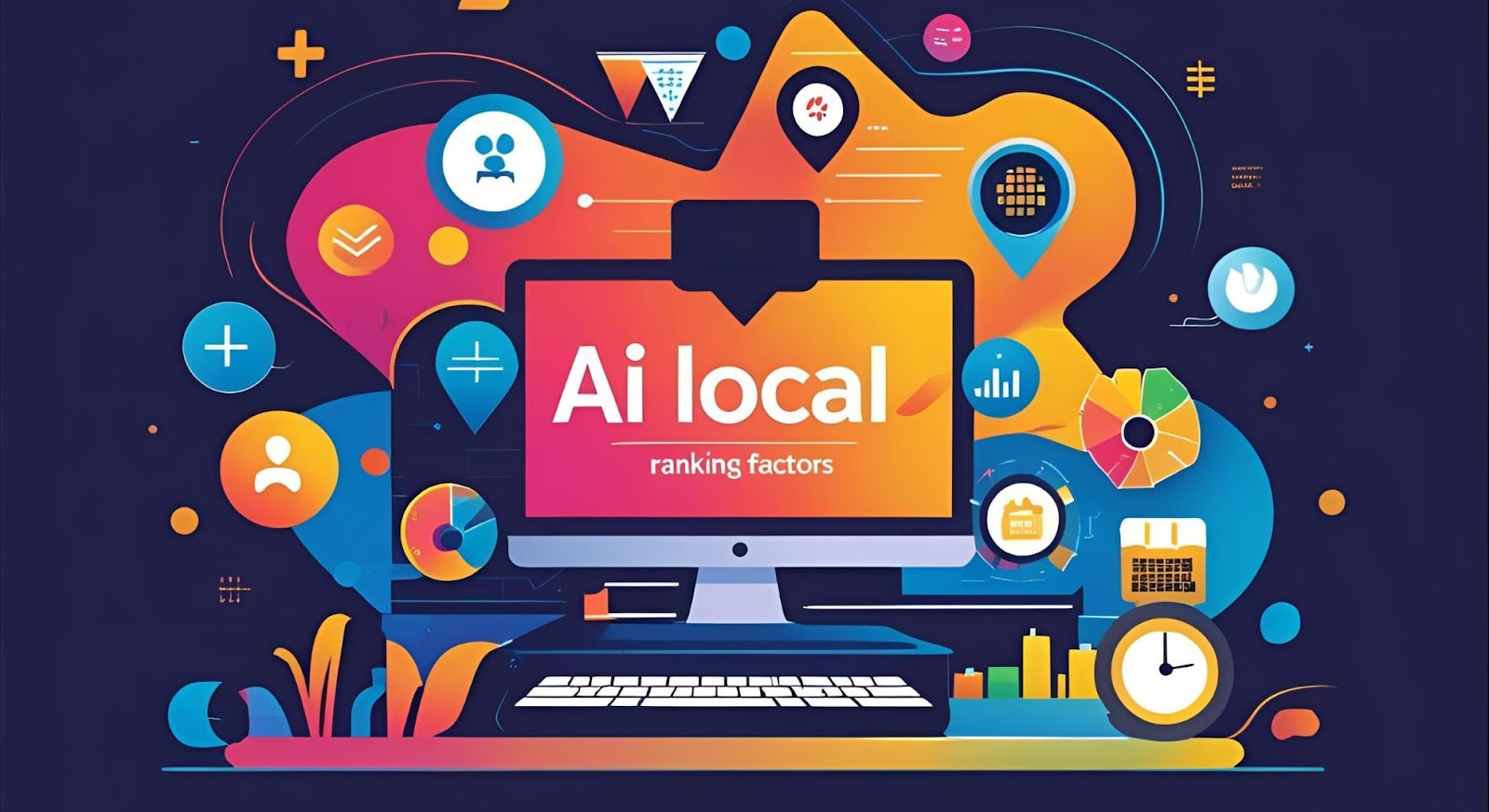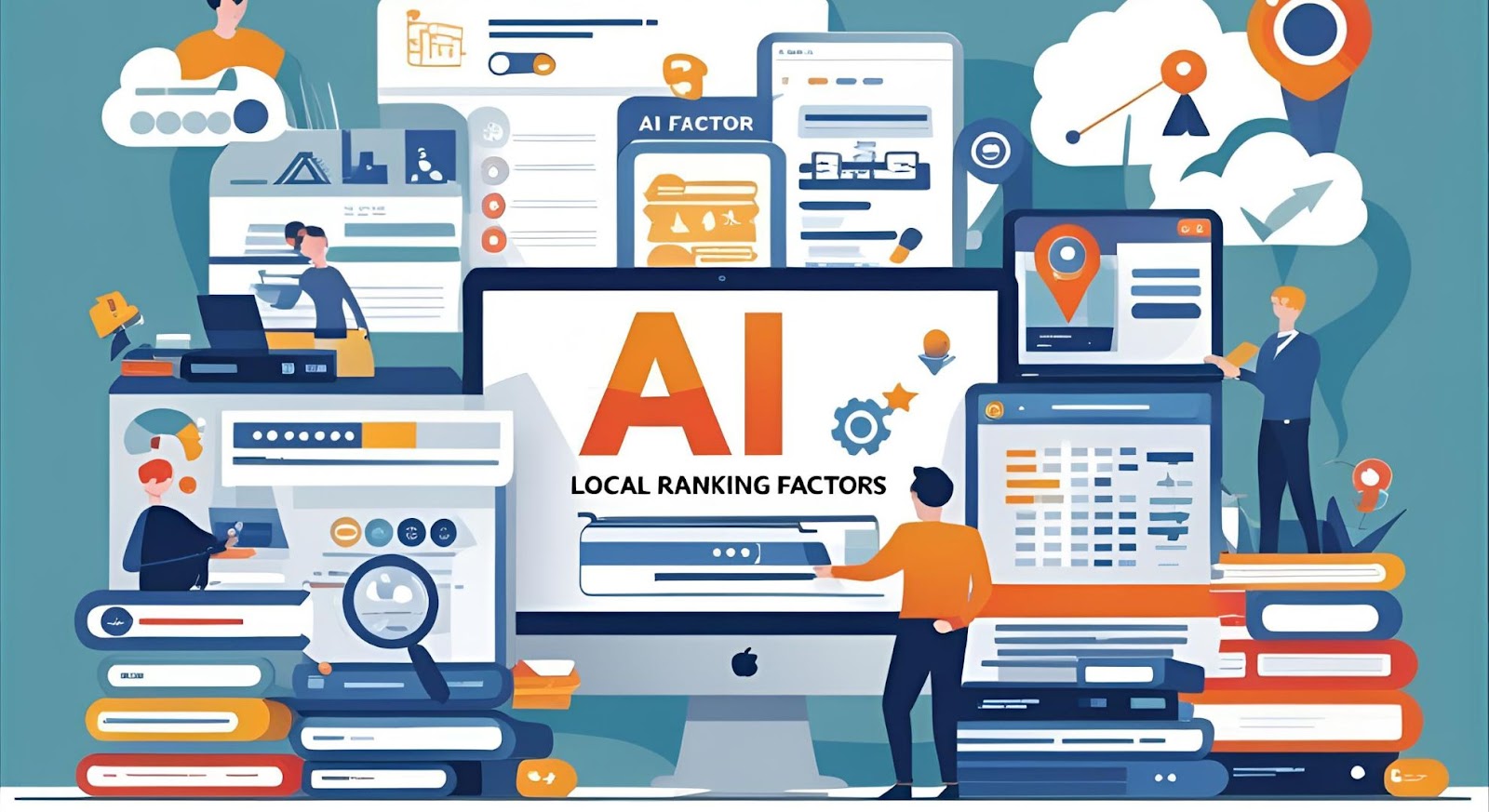
AI local ranking factors has fundamentally transformed how search engines evaluate and rank local businesses, introducing sophisticated machine learning algorithms that analyze user behavior patterns, business authenticity signals, and content relevance with unprecedented precision. The integration of AI technologies including natural language processing, computer vision, and predictive analytics has created a new paradigm for local search optimization that extends far beyond traditional ranking factors like citations and keyword optimization. Modern local search algorithms leverage AI to understand user intent, evaluate business credibility, and deliver personalized search experiences that adapt to individual user preferences and contextual factors.
The shift toward AI-driven local search represents the most significant evolution in local SEO since the introduction of Google My Business, requiring businesses to adapt optimization strategies that align with machine learning preferences rather than traditional algorithmic rules. Success in AI-powered local search demands understanding how artificial intelligence interprets business signals, user engagement patterns, and content quality indicators that influence ranking decisions. This transformation affects every aspect of local search optimization from review authenticity assessment to content relevance evaluation, creating new opportunities for businesses that understand AI-driven ranking dynamics.
Key Takeaways
• Machine learning algorithms now evaluate user engagement patterns and behavioral signals to determine local business relevance and quality beyond traditional ranking factors
• Natural language processing enables search engines to understand user intent and context more accurately, affecting how businesses should optimize for conversational and voice search queries
• Computer vision technology analyzes business photos and visual content to verify authenticity and assess business quality, making visual optimization crucial for local rankings
• Predictive analytics influence search results by anticipating user needs based on historical behavior, location patterns, and temporal factors that affect local search visibility
• Real-time signals processing enables dynamic ranking adjustments based on current business status, availability, and user demand patterns throughout different time periods
• Personalization algorithms customize local search results for individual users based on search history, preferences, and behavior patterns, requiring broader optimization approaches
Overview
Understanding AI’s impact on local search ranking factors requires examining how machine learning technologies analyze business signals, user interactions, and content quality to determine search visibility. This comprehensive analysis explores the specific AI technologies reshaping local search, their implications for optimization strategies, and practical approaches for adapting to AI-driven ranking systems. The methodology emphasizes actionable insights that enable businesses to leverage AI capabilities while maintaining focus on user experience and authentic business representation.
Machine Learning and Behavioral Signal Analysis
Modern local search algorithms utilize sophisticated machine learning models to analyze user behavior patterns that indicate business quality and relevance. These AI systems track how users interact with local search results, including click-through rates, time spent on business listings, direction requests, and subsequent actions that signal satisfaction or dissatisfaction with search results. Machine learning algorithms identify patterns in these behavioral signals to determine which businesses consistently meet user expectations and deserve higher visibility in local search results.
The behavioral analysis extends beyond simple engagement metrics to include complex user journey patterns that reveal business performance indicators. AI algorithms analyze how users progress from initial search queries through business discovery, contact attempts, and eventual visits or purchases. This comprehensive behavioral tracking enables search engines to identify businesses that consistently deliver positive user experiences while penalizing those that generate negative engagement signals.
User Engagement Pattern Recognition
AI-powered local search systems analyze micro-interactions that provide insights into user satisfaction and business quality. These interactions include photo viewing patterns, review reading behavior, menu browsing time, and social media engagement rates that collectively indicate user interest and business appeal. Machine learning models identify correlations between these engagement patterns and successful business interactions, using this data to influence ranking decisions.
The temporal analysis of user engagement reveals how business performance varies throughout different time periods, enabling AI algorithms to adjust rankings based on current demand patterns and business availability. This dynamic ranking adjustment ensures users receive relevant results that align with real-time business conditions and user needs.
Natural Language Processing and Intent Understanding
Natural language processing capabilities have revolutionized how search engines interpret user queries and match them with relevant local businesses. AI systems now understand conversational search patterns, voice search queries, and complex intent expressions that traditional keyword matching algorithms struggled to process accurately. This advancement enables more precise matching between user needs and business offerings while supporting optimization strategies that focus on natural language rather than keyword stuffing.

The evolution of NLP in local search enables understanding of contextual queries that include temporal, situational, and preferential information. Users can now search for “family-friendly restaurants open late near me” and receive results that accurately interpret multiple intent layers including dining preferences, timing requirements, and location relevance. This sophisticated intent understanding requires businesses to optimize for comprehensive user needs rather than simple keyword phrases.
Conversational Search Optimization
Voice search and conversational queries represent growing segments of local search traffic that demand AI-powered interpretation capabilities. These queries often include natural speech patterns, incomplete phrases, and contextual references that require advanced NLP processing to understand user intent accurately. Businesses must optimize content to address conversational search patterns while maintaining natural language flow that appeals to both AI algorithms and human users.
The integration of conversational AI enables search engines to understand follow-up queries and contextual refinements that occur within extended search sessions. This capability allows users to narrow search results through natural conversation, requiring businesses to optimize for multi-turn query patterns and contextual relevance signals.
Computer Vision and Visual Content Analysis
Computer vision technology has introduced sophisticated visual analysis capabilities that evaluate business authenticity, quality indicators, and customer experience signals through image and video content. AI algorithms analyze Google My Business photos, social media images, and user-generated visual content to assess business cleanliness, atmosphere, food quality, and overall customer experience. This visual analysis provides ranking signals that complement traditional text-based optimization approaches.
The implementation of computer vision in local search enables automatic verification of business information including operating hours, menu accuracy, and service availability through real-time image analysis. AI systems can identify discrepancies between claimed business information and visual evidence, affecting ranking positions for businesses with inconsistent or outdated visual content. This technology requires businesses to maintain current, high-quality visual content that accurately represents their offerings and environment.
Visual Content Quality Assessment
AI-powered image analysis evaluates technical quality factors including lighting, composition, and image resolution while assessing content relevance and appeal. Machine learning algorithms identify visual elements that correlate with positive user experiences including clean environments, appealing food presentation, and professional service settings. These quality assessments influence ranking decisions while providing businesses with incentives to invest in professional visual content.
The analysis of user-generated visual content provides additional authenticity signals that influence local search rankings. AI algorithms evaluate customer photos and videos to verify business claims while identifying patterns that indicate positive or negative customer experiences. This user-generated content analysis requires businesses to encourage satisfied customers to share visual content while maintaining consistent quality standards.
Predictive Analytics and Demand Forecasting
Predictive analytics capabilities enable AI systems to anticipate user needs based on historical behavior patterns, seasonal trends, and contextual factors that influence local search demand. These predictive models analyze past search behavior, location patterns, and temporal factors to determine when and where specific types of businesses will experience increased demand. This forecasting capability enables dynamic ranking adjustments that present relevant businesses when users are most likely to need their services.

The implementation of demand forecasting affects how businesses appear in search results throughout different time periods, weather conditions, and local events that influence customer behavior. AI algorithms identify patterns that predict increased demand for specific business categories, adjusting rankings to ensure relevant businesses receive appropriate visibility during peak demand periods. This dynamic ranking system rewards businesses that can meet predicted demand while maintaining service quality.
Temporal Ranking Adjustments
AI-driven temporal analysis enables search algorithms to adjust business rankings based on current availability, demand patterns, and service capacity indicators. These adjustments ensure users receive relevant results that align with real-time business conditions rather than static ranking positions. Businesses benefit from understanding these temporal factors and optimizing their online presence to signal availability and capacity during peak demand periods.
The integration of real-time business data including wait times, availability status, and current promotions enables AI algorithms to present the most relevant options for immediate user needs. This real-time optimization requires businesses to maintain current information across all platforms while implementing systems that communicate availability and service status effectively.
Personalization and User-Specific Ranking
AI-powered personalization algorithms customize local search results based on individual user preferences, search history, and behavioral patterns that indicate specific business preferences. These personalization systems analyze user interactions with different business types, price points, and service categories to deliver customized results that align with established preferences. This personalization capability means businesses must optimize for broader audience segments rather than generic optimization approaches.
The implementation of personalized local search affects how businesses appear for different user segments, requiring optimization strategies that appeal to diverse customer preferences while maintaining consistent brand messaging. AI algorithms identify user segments based on behavior patterns, enabling businesses to tailor optimization approaches for specific demographic groups and preference categories that align with their target customer base.
Individual Preference Recognition
Machine learning algorithms analyze user behavior patterns to identify preferences including price sensitivity, service quality expectations, and brand loyalty indicators that influence search result presentation. These preference recognition systems enable customized ranking that presents businesses most likely to meet individual user needs while supporting businesses that consistently deliver positive experiences for specific customer segments.
The analysis of cross-platform user behavior enables AI systems to understand comprehensive customer preferences that extend beyond search interactions to include social media engagement, review patterns, and purchase behavior. This comprehensive preference analysis requires businesses to maintain consistent quality and messaging across all digital platforms while focusing on customer satisfaction metrics that influence AI-driven personalization.
Real-Time Signal Processing and Dynamic Rankings
Real-time signal processing capabilities enable AI algorithms to adjust local search rankings based on current business conditions, user demand, and availability factors that change throughout the day. These dynamic ranking systems analyze live data streams including business hours, wait times, inventory levels, and staff availability to present the most relevant options for immediate user needs. This real-time optimization creates opportunities for businesses that can effectively communicate current status and availability.

The implementation of dynamic rankings affects how businesses compete for visibility throughout different time periods and demand conditions. AI algorithms prioritize businesses that can meet immediate user needs while maintaining service quality, creating competitive advantages for businesses with flexible operations and effective communication systems. This dynamic environment requires businesses to monitor performance continuously while implementing systems that support real-time optimization.
Live Data Integration
AI-powered local search systems integrate live data sources including traffic conditions, weather patterns, and local events that influence user behavior and business demand. This integration enables ranking adjustments that account for external factors affecting business accessibility and user needs. Businesses benefit from understanding these external factors while implementing strategies that leverage favorable conditions and mitigate negative impacts.
The analysis of real-time user behavior patterns enables AI algorithms to identify trending demands and emerging opportunities that affect local search visibility. Businesses that can adapt quickly to changing conditions and communicate availability effectively gain competitive advantages in AI-driven ranking systems that prioritize relevance and accessibility.
Implementation Strategies for AI-Optimized Local SEO
Adapting to AI-driven local search ranking factors requires comprehensive optimization strategies that address multiple AI technologies simultaneously while maintaining focus on user experience and business authenticity. Successful implementation begins with understanding how different AI systems evaluate business signals, enabling strategic optimization that aligns with machine learning preferences rather than traditional algorithmic rules.
The optimization approach should emphasize authentic business representation, consistent user experiences, and comprehensive digital presence that provides AI algorithms with accurate signals for evaluation. This strategy includes maintaining current business information, encouraging genuine customer engagement, and implementing technical optimizations that support AI analysis capabilities.
Multi-Platform Optimization Strategy
AI-driven local search optimization requires consistent optimization across multiple platforms and touchpoints that provide data to machine learning algorithms. This comprehensive approach includes Google My Business optimization, social media management, review platform engagement, and website optimization that collectively support AI evaluation processes. The strategy emphasizes consistency and authenticity rather than manipulation or artificial signal generation.
The implementation of cross-platform optimization enables businesses to provide comprehensive signals that support AI analysis while building sustainable competitive advantages. This approach requires understanding how different platforms contribute to AI evaluation while maintaining efficient optimization processes that maximize return on investment.
Future Trends and Emerging Technologies
The continued evolution of AI technologies will introduce new ranking factors and optimization opportunities that reshape local search optimization strategies. Emerging technologies including augmented reality, Internet of Things integration, and advanced predictive analytics will create new signals for AI evaluation while expanding optimization possibilities for forward-thinking businesses.
Understanding these emerging trends enables businesses to prepare for future optimization requirements while building flexible strategies that adapt to technological advancement. The key to long-term success lies in maintaining focus on user experience and business authenticity while leveraging technological capabilities that enhance customer value and engagement.
Emerging AI Capabilities
Advanced AI technologies including emotion recognition, sentiment analysis, and predictive behavior modeling will introduce new ranking factors that require evolved optimization approaches. These capabilities will enable more sophisticated evaluation of customer satisfaction, business performance, and user experience quality that extends beyond current measurement capabilities.
The integration of emerging technologies will create new optimization opportunities while requiring businesses to adapt strategies that align with advancing AI capabilities. Success will depend on maintaining flexibility and user focus while leveraging technological advancement for competitive advantage.
Frequently Asked Questions
How do AI algorithms evaluate local business authenticity? AI systems analyze multiple authenticity signals including review patterns, photo consistency, business information verification, and user engagement behaviors. Machine learning algorithms identify patterns that indicate genuine businesses versus fake or manipulative listings, requiring authentic optimization approaches that focus on real customer value rather than artificial signal generation.
What role does user behavior play in AI-driven local rankings? User behavior signals provide critical ranking factors including click-through rates, engagement time, direction requests, and conversion actions that indicate business quality and relevance. AI algorithms analyze these behavioral patterns to determine which businesses consistently meet user expectations and deserve higher search visibility.
How should businesses optimize for voice search and conversational AI? Voice search optimization requires focusing on natural language patterns, conversational keywords, and comprehensive content that addresses complete user questions. Businesses should optimize for question-based queries while maintaining conversational tone and providing direct answers to common customer inquiries.
What visual content factors do AI algorithms evaluate for local search? Computer vision analysis evaluates image quality, content relevance, business authenticity, and customer experience indicators visible in photos and videos. Businesses should maintain high-quality, current visual content that accurately represents their offerings while encouraging satisfied customers to share authentic visual content.
How do real-time signals affect local search rankings? Real-time signals including current business hours, availability status, wait times, and demand patterns influence dynamic ranking adjustments throughout different time periods. Businesses should maintain current information while implementing systems that communicate availability and service status effectively.
What is the impact of AI personalization on local SEO strategies? AI personalization customizes search results based on individual user preferences and behavior patterns, requiring businesses to optimize for diverse customer segments while maintaining consistent quality and messaging. Optimization strategies should focus on broader audience appeal rather than generic approaches.
How can businesses prepare for future AI developments in local search? Future preparation requires maintaining flexible optimization strategies that emphasize user experience, business authenticity, and comprehensive digital presence. Businesses should focus on providing genuine value while staying informed about emerging AI technologies and optimization opportunities.
What metrics should businesses track to measure AI-optimized local SEO success? Critical metrics include user engagement rates, behavioral signals, conversion actions, review quality, visual content performance, and real-time availability optimization. Businesses should track comprehensive performance indicators that align with AI evaluation criteria rather than traditional ranking metrics alone.
Sources
AI and Machine Learning Resources:
Local Search and SEO Analysis:
- Google My Business Help Center
- Google Search Central
- Local SEO Research Studies
Computer Vision and NLP Technologies:
Industry Analysis and Trends:
Technical Implementation Guides:
- Google Developers Documentation
- Schema.org Structured Data
- Technical SEO Implementation Guides
Stay ahead of AI-driven local search evolution with Cloud 7 Agency’s cutting-edge optimization strategies that leverage artificial intelligence for maximum local visibility. Our expert team specializes in AI-optimized local SEO approaches that align with machine learning algorithms while delivering authentic customer value and sustainable competitive advantages. Contact our AI-focused local SEO specialists today to discover how intelligent optimization can transform your local search performance and drive measurable business growth.
